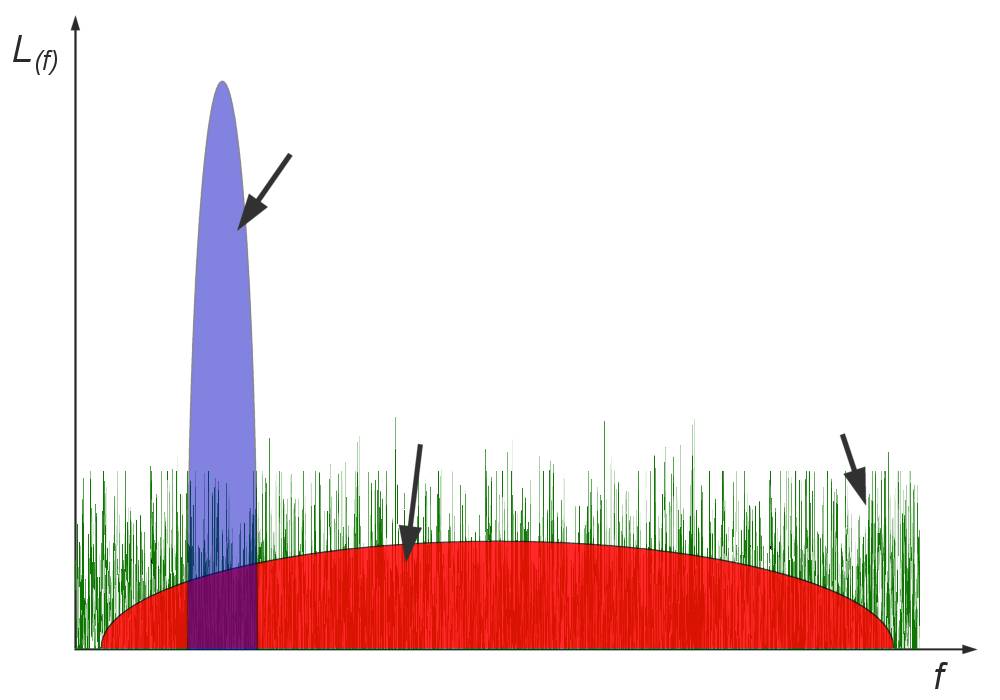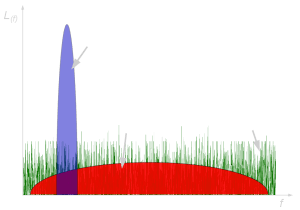UWB-Radar

narrow-band system
Wideband
System
noise
Figure 1: The UWB-radar transmits in a wide spectrum with very low power

narrow-band system
Wideband
System
noise
Figure 1: The UWB-radar transmits in a wide spectrum with very low power
What is an UWB radar?
UWB-Radar
Ultra Wide-band (UWB) radar systems transmit signals across a much wider frequency than conventional radar systems and are usually very difficult to detect. The transmitted signal is significant for its very light power spectrum, which is lower than the allowed unintentional radiated emissions for electronics. The most common technique for generating a UWB signal is to transmit pulses with very short durations (less than 1 nanosecond).
The spectrum of a very narrow-width pulse has a very large frequency spectrum approaching that of white noise as the pulse becomes narrower and narrower. These very short pulses need a wider receiver bandwidth as conventional radar systems.
The amount of spectrum occupied by a signal transmitted by a UWB-radar (i.e., the bandwidth of the UWB signal) is at least 25 percent of the center frequency. Thus, a UWB signal centered at 2 GHz would have a minimum bandwidth of 500 MHz and the minimum bandwidth of a UWB signal centered at 4 GHz would be 1 GHz. Often the absolute bandwidth is larger than 1 GHz.
An example of a typical UWB radar is the pulsed noise radar. This radar is transmitting at the center frequency of 24 GHz single pulses with a duration of a few nanoseconds, and a pulse power of 4 mW. Its bandwidth is therefore 8 GHz. Whether this radar is transmitting or not cannot be determined by measurement from the outside of the radar as its transmit pulses do not differ from environmental noise.
